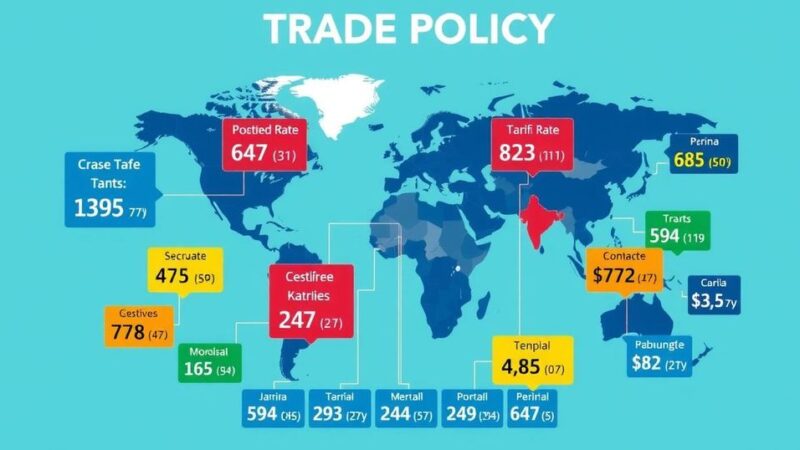China’s economy, especially in Guangdong province, is adversely affected by Trump’s tariffs, targeting 100% of goods. This impacts both large and small manufacturers, prompting searches for new markets and solutions to survive the economic challenges. With a significant reliance on exports, the tariffs threaten China’s stability, reflecting a deeper geopolitical struggle between the U.S. and China.
In China’s economy, particularly in the province of Guangdong, the ramifications of President Trump’s tariffs are starting to take effect. Known as the world’s factory, Guangdong houses thousands of factories producing consumer goods. Since Trump’s administration, China has become a primary target in the U.S. trade war, facing aggressive tariffs on 100% of its goods. As of March 4th, imported products from China are subjected to tariffs of 20% or more.
Local manufacturers, like Johnny Pan, who runs a family business producing fans and air purifiers, have felt the pressure. With a significant portion of his sales directed to the U.S., he reported a sharp decline in orders, losing millions within a month. “We have to seek out new markets to get away from the US,” states Mr. Pan, indicating a shift in focus towards product development and exploring manufacturing alternatives abroad.
Small operations in Guangdong face more challenges, as they typically specialize in limited production processes within the broader supply chain. One small workshop specializes in sewing buttons onto garments but expresses concern over reduced incomes. With fewer options to raise prices, these businesses must look for new markets; otherwise, they risk jeopardizing the livelihoods of their contract workers.
China’s vulnerability is reflected in the 20% of GDP reliant on exports. The looming threat of a trade shock could aggravate its already fragile economy, characterized by stagnating growth, high youth unemployment, and numerous low-paid migrant workers. The restrained response from Beijing indicates a recognition of the economic challenges and a reluctance to escalate conflicts with the U.S.
Although China’s exposure to the U.S. market has decreased since the trade war began in 2016, the nation remains cautious about maintaining stability and its international reputation. The dynamics between the two superpowers continue to evolve, with tariffs merely representing a facet of a broader geopolitical struggle. Chinese leadership is unlikely to passively accept the economic hardships imposed by tariffs, highlighting their resolve to protect their economic interests.
The implementation of tariffs by the U.S. on Chinese goods is having significant repercussions in China’s manufacturing heartland, particularly in Guangdong. As businesses grapple with declining orders and economic instability, both larger manufacturers and smaller workshops face challenges in preserving livelihoods. The overarching tension between the U.S. and China emphasizes the complexities of international trade and the precarious position of an economy heavily reliant on exports. China’s leaders, acknowledging these challenges, are expected to respond strategically to mitigate the impact of tariffs on their economy.
Original Source: news.sky.com






